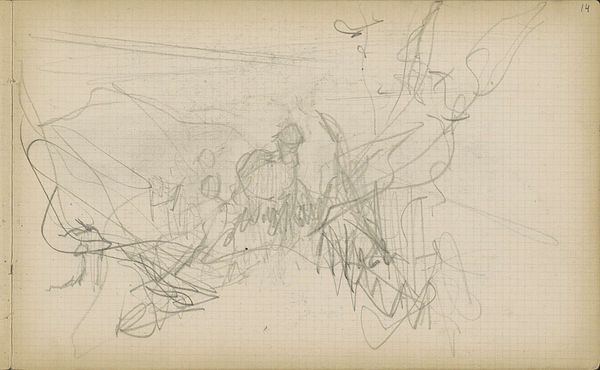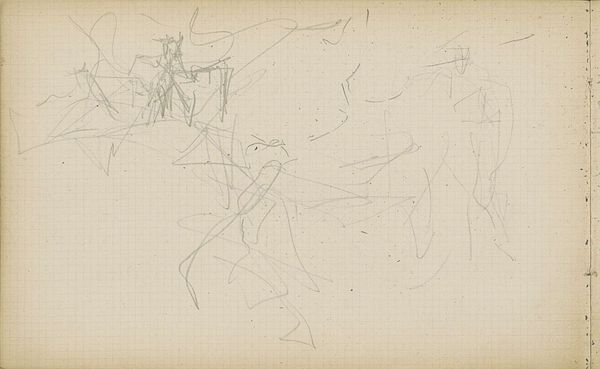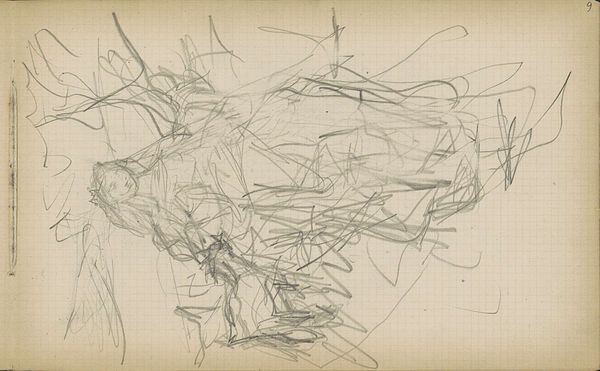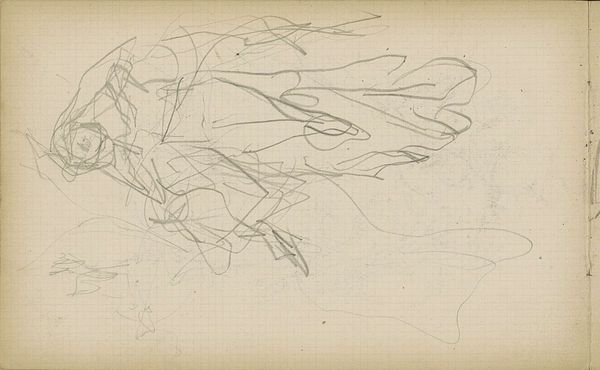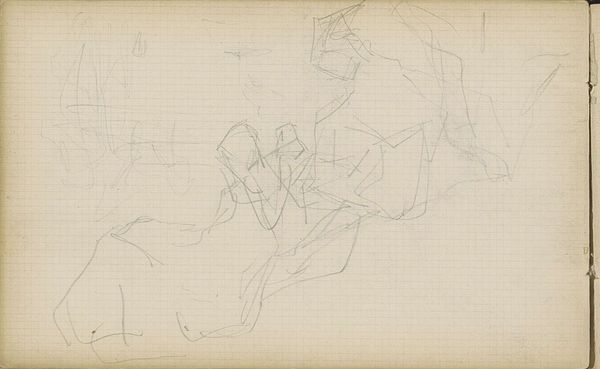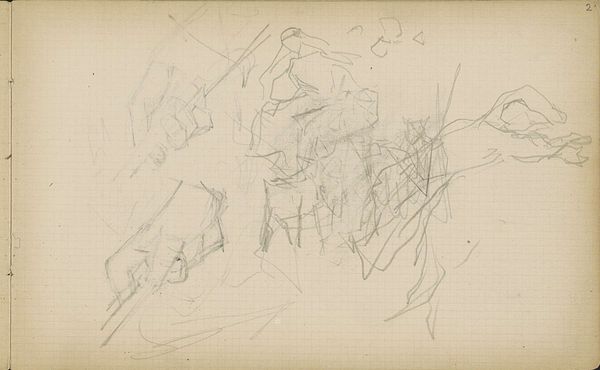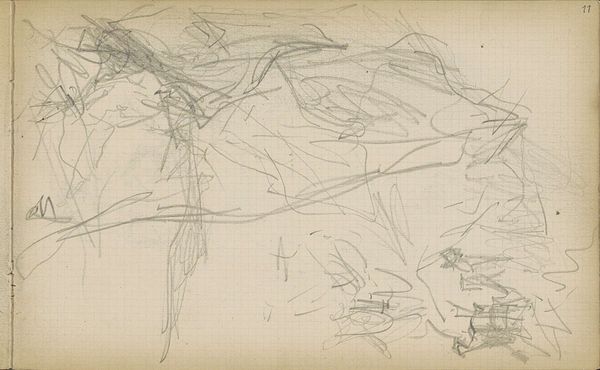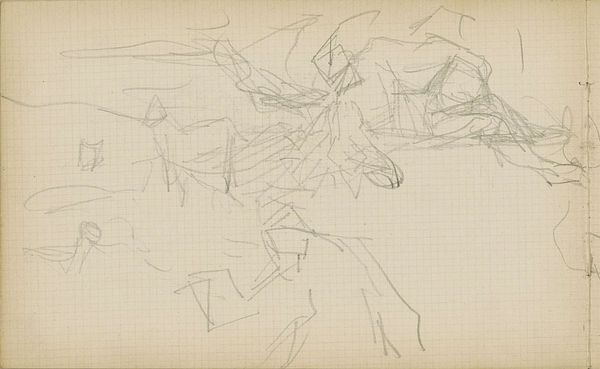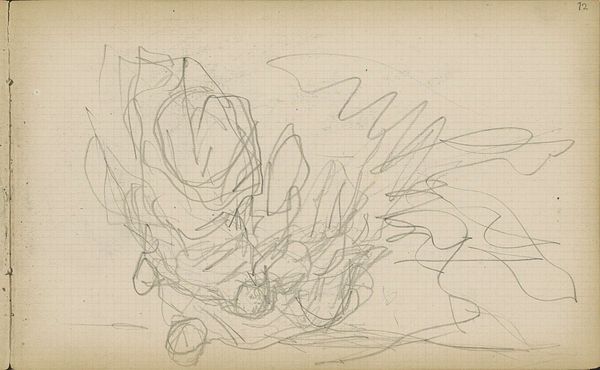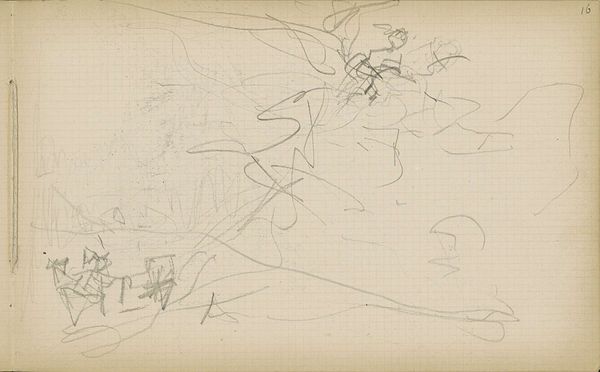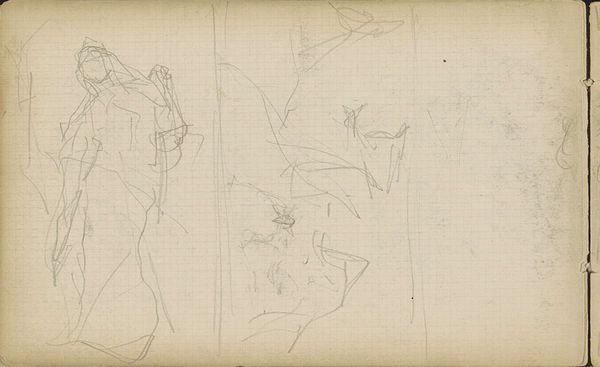
#
amateur sketch
#
light pencil work
#
pen sketch
#
incomplete sketchy
#
personal sketchbook
#
ink drawing experimentation
#
pen-ink sketch
#
sketchbook drawing
#
sketchbook art
#
initial sketch
Copyright: Rijks Museum: Open Domain
Editor: Here we have "Studieblad, onder andere met een dier," which translates to "Study sheet, among other things with an animal," by Matthijs Maris, created sometime between 1849 and 1917. It's currently held at the Rijksmuseum. Looking at it, the composition feels quite chaotic and exploratory. There are multiple layers of sketched lines creating an overall abstract effect. What strikes you about the structure of this work? Curator: Indeed. Structurally, the initial impact lies in its disjunctive composition. Observe how the eye is compelled to jump between the relatively defined animal figures on the left and the chaotic mass of lines dominating the right. The grid beneath introduces an element of order against which the sketch's apparent randomness is heightened. Consider the interplay: does the grid amplify the formlessness, or does it attempt to contain it? Editor: I hadn't thought about it that way. I suppose the grid does create a contrast, emphasizing how loose and free-flowing the lines are in the sketch. Curator: Precisely. Note the varying pressure and direction of the pencil strokes. They do not solely define contours; they actively create volume and shadow. The texture isn't just representational but tactile, suggesting Maris's engagement with the physical properties of the medium itself. Editor: So, the form of the work is not just about what it depicts, but about the very act of drawing itself? Curator: Absolutely. Maris is not simply depicting a scene, he is exploring the potential of line and tone, investigating how they create spatial tension and structural balance – or deliberate imbalance. Consider where your eye is repeatedly drawn and why. Is it the detailed sections, or the ambiguous mass of lines that captivates you more? Editor: I think it's the ambiguity, the sort of unresolved tension between the recognizable figures and the abstract mass. It's almost as though Maris is showing the process of thinking through form, which I guess is not surprising for a study sheet. Thank you. I understand better how focusing on the materiality opens up new avenues for comprehending the work. Curator: The intrinsic elements guide our interpretation. Observing this inherent structural tension enables us to perceive the art not merely as a depiction, but as a structural investigation itself.
Comments
No comments
Be the first to comment and join the conversation on the ultimate creative platform.
